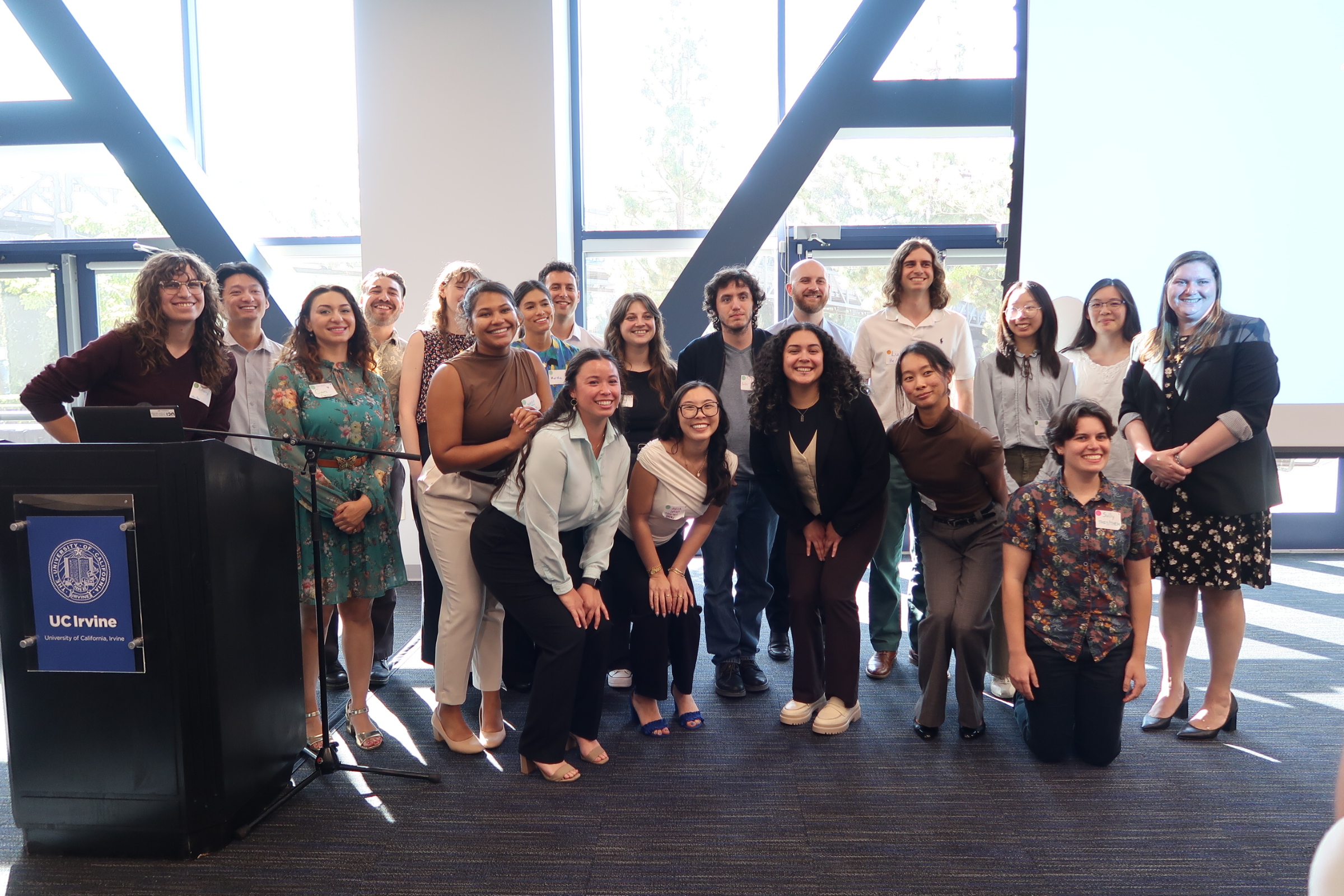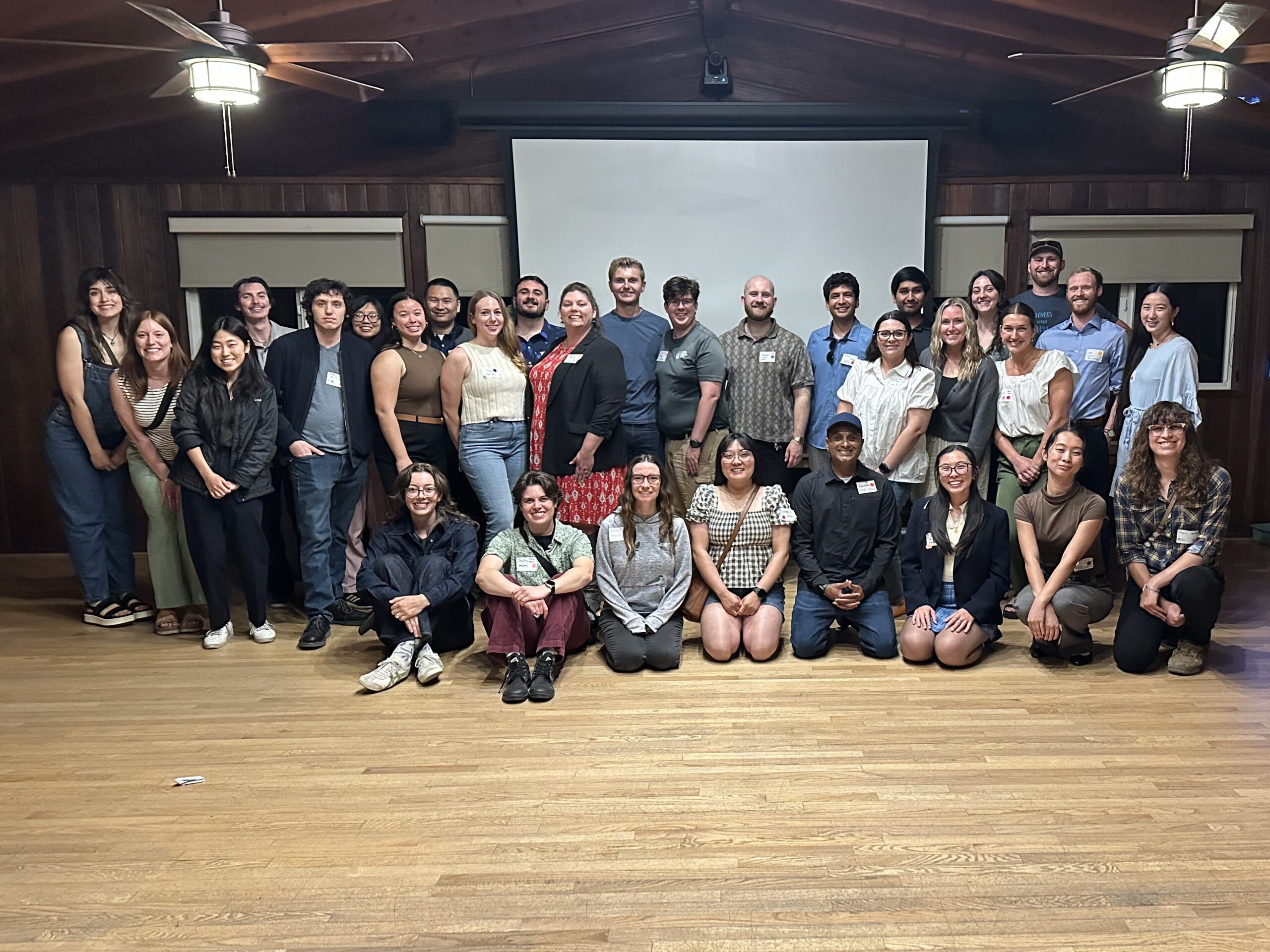Student Blog: “Under Pressure: How Human Activity Shapes the Lives of Owl Limpets” by Thomas Shields
What Are Owl Limpets
California’s tide pools are home to many unique and fascinating animals; barnacles, mussels, sea stars, urchins, and more cover the rocks and create a balancing act between their territories. One especially important animal is the limpet – small marine snails that attach themselves tightly to the flat rocks. Blending into the rocks, you may not have realized how many limpets live in our local tidepools or how important they are to maintaining the delicate balance of the tidepool.
One species of limpet, the owl limpet, is what’s referred to as an ecosystem engineer. This term is used to describe a plant or animal that has a large impact on its surroundings; one example being how beavers chew through trees and create dams. However, knocking down trees is a little too much for this mighty mollusk – instead, the owl limpet acts as an engineer by “farming” along flat surfaces on rocks, clearing out competitors like barnacles, mussels, and oysters to allow algae to grow instead (Stimson, 1970).
Unfortunately, this important species is at risk from humans. Harvesting limpets is popular, and poachers tend to favor larger limpets (Sagarin et al. 2007).

Size Does Matter
Limpets are what’s called a sequentially hermaphroditic species – this means as they grow in size, they eventually change from male to female. By taking away only the largest limpets, poachers could cause fewer and fewer females to be in each tidepool to reproduce.
This, however, is not a guarantee. Some studies have shown that owl limpets are able to “correct” this skewed sex ratio by changing aspects of their life history (Fenberg and Roy 2012). Owl limpets might grow slower or faster, or transition from male to female at an earlier size.
Even if this is the case, the skewed sex ratio isn’t the only problem with having a tidepool of smaller owl limpets. Smaller owl limpets have more difficulty fulfilling their roles as ecosystem engineers; they’re less capable at clearing out territories and outcompeting mussels and barnacles (Stimson, 1973). Without them, algae and other animals that compete with mussels and barnacles might find it harder to settle in the nearby tide pools.
The problems facing owl limpets and their effects can be complicated, but part of my work as an MCRS student involved studying these limpets to see what the effects of this discretionary harvesting might really be.

Tale of Two Beaches
Between 2022 and 2023, MCRS students measured the size owl limpets and the area of their territories across two beaches, Corona del Mar (2022) and Treasure Cove (2023). These tide pools were selected based on the contrast in how accessible they are to people. Corona del Mar is very accessible to the public; the tide pool used for this study is only a short walk from the nearby parking. Treasure Cove, however, is much more secluded. Accessing Treasure Cove requires a somewhat difficult hike from within Crystal Cove State Park. This allows for a perfect contrast to owl limpets facing human pressures and owl limpets in a more “natural” state.
Students worked diligently to measure each limpet with calipers and used a volleyball net to estimate the area of the limpet’s territory. Through their hard work, over 400 limpets were surveyed in total.
What We Know, What We Don’t
Looking at the limpets, MCRS students found a clear difference in the size of owl limpets at Corona del Mar and Treasure Cove. It seemed that ease of access was causing the limpets to shrink. Not only that, but these smaller Corona del Mar limpets were holding significantly smaller territories than their larger Treasure Cove counterparts.
Further reading also established that these impacts were also occurring in No-Take MPAs that were accessible to the public, meaning it might not be poaching alone driving this size change (Kido and Murray, 2003).
What we still need to uncover is if this means that Corona del Mar limpets are changing sex earlier in their life while they’re smaller, or if these impacts are causing owl limpets to grow at a faster or slower pace. While we do know that they’re managing smaller territories, it’s yet to be studied how this impacts other species in the tide pool. Owl limpets may not be an endangered species, but their role as ecosystem engineers makes them important to understand.
Bringing It All Together
Owl limpets are an incredibly important species to the overall health of a tide pool. As an ecosystem engineer, they create space for other species to thrive in an environment where it can be difficult to compete for space with animals like mussels, oysters, and barnacles. Size plays an important part in an owl limpet’s life history, but size reduction due to human impacts is still not fully understood. It’s important that when we go out to enjoy our local tide pools, we respect the boundaries of these incredible creatures.
Acknowledgements
Fenberg, P. B., & Rivadeneira, M. M. (2011). Range limits and geographic patterns of abundance of the rocky intertidal owl limpet, Lottia gigantea: Range limits and geographic patterns of abundance. Journal of Biogeography, 38(12), 2286–2298. https://doi.org/10.1111/j.1365-2699.2011.02572.x
Fenberg, P. B., & Roy, K. (2012). Anthropogenic Harvesting Pressure and Changes in Life History: Insights from a Rocky Intertidal Limpet. The American Naturalist, 180(2), 200–210. https://doi.org/10.1086/666613
Kido, J., & Murray, S. (2003). Variation in owl limpet Lottia gigantea population structures, growth rates, and gonadal production on southern California rocky shores. Marine Ecology Progress Series, 257, 111–124. https://doi.org/10.3354/meps257111
Lottia gigantea | MARINe. (n.d.). Retrieved May 21, 2024, from https://marine.ucsc.edu/target/target-species-lottia.html
Pomb, O. A., & Escofet, Anamar. (1996). Effect of Exploitation on the Limpet Lottia gigantea: A Field Study in Baja California (Mexico) and California (U.S.A.)! PACIFIC SCIENCE, 50.
Sagarin, R. D., Ambrose, R. F., Becker, B. J., Engle, J. M., Kido, J., Lee, S. F., Miner, C. M., Murray, S. N., Raimondi, P. T., Richards, D., & Roe, C. (2007). Ecological impacts on the limpet Lottia gigantea populations: Human pressure over a broad scale on island and mainland intertidal zones. Marine Biology, 150(3), 399–413. https://doi.org/10.1007/s00227-006-0341-1
Stimson, J. (1970). Territorial Behavior of the Owl Limpet, Lottia Gigantea. Ecology, 51(1), 113–118. https://doi.org/10.2307/1933604Stimson, J. (1973). The Role of the Territory in the Ecology of the Intertidal Limpet Lottia Gigantea (Gray). Ecology, 54(5), 1020–1030. https://doi.org/10.2307/1935568



